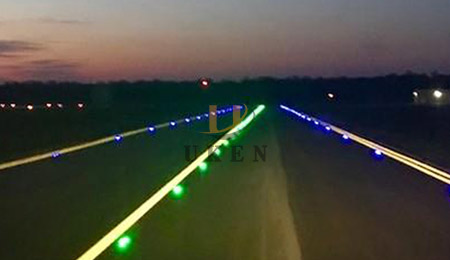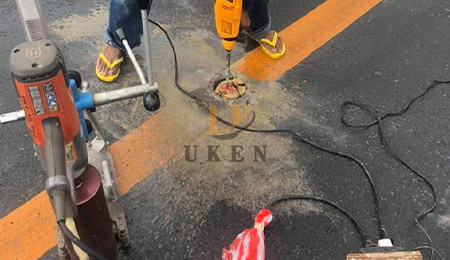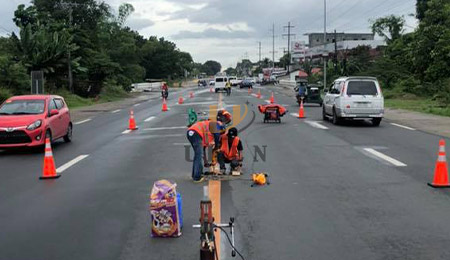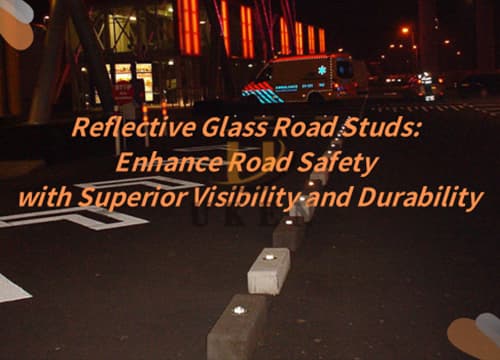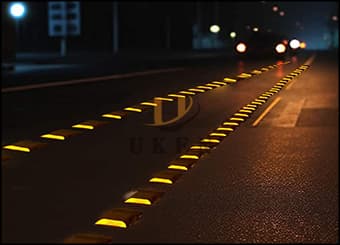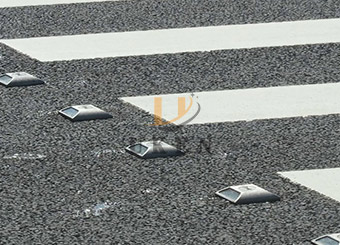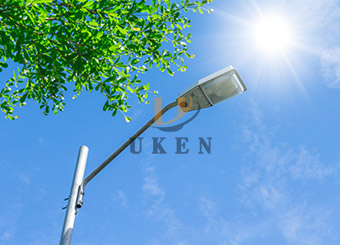In the intricate dance of urban illumination, the placement of solar road stud lights plays a critical role in ensuring optimal visibility, safety, and functionality. This article delves into the art and science of determining the ideal installation distance for solar road stud lights, unraveling the factors that influence their placement, and maximizing their effectiveness on roadways.
Why is road stud spacing so crucial?
1. Ensure the warning effect of solar LED road studs
The purpose of solar road studs is to improve the visibility of the road and warn drivers to pay attention to the road conditions. If the installation distance is too far, the warning effect of the road studs will be weakened, and it will not be able to provide sufficient guidance and warnings to the driver at critical moments. If the distance is too close, it may cause interference and affect the driving experience.
2. Improve the overall aesthetics and coordination of the road
Reasonable installation distance can also help improve the overall aesthetics and coordination of the road. Solar road studs can not only provide warnings but also serve as part of road beautification. By scientifically and reasonably planning the installation distance, the road studs can be integrated with the road environment to enhance the overall visual effect of the road.
What affects the distance of road studs?
1. Understanding Illumination Coverage
The installation distance of solar road studs is intricately linked to their illumination coverage, which refers to the area illuminated by each light. Factors such as light intensity, beam angle, and mounting height influence the spread of light and dictate the spacing between each light along the roadway.
2. Balancing Visibility and Efficiency
Achieving the right balance between visibility and efficiency is paramount when determining installation distance. Solar road stud lights should be spaced evenly along the roadway to ensure consistent illumination without creating glare or shadows. Proper spacing maximizes visibility for road users while optimizing energy efficiency and minimizing installation costs.
3. Considering Road Characteristics
The installation distance of Road studs varies depending on the characteristics of the roadway, including traffic volume, speed limits, curvature, and alignment. High-traffic roads with faster speeds may require closer spacing between lights to ensure adequate visibility and safety, while low-traffic roads may allow for wider spacing without compromising effectiveness.
4. Addressing Environmental Factors
Environmental factors such as ambient light levels, terrain, vegetation, and weather conditions also influence installation distance. In areas with dense foliage or frequent fog, closer spacing may be necessary to maintain visibility, while on straight, unobstructed roads, lights can be spaced further apart. Adapting installation distance to environmental conditions ensures optimal performance in diverse settings.
5. Utilizing Industry Guidelines and Standards
Industry guidelines and standards provide valuable recommendations for determining installation distance based on best practices and safety requirements. Organizations such as the International Commission on Illumination (CIE) and the American Association of State Highway and Transportation Officials (AASHTO) offer guidelines for roadway lighting design, including spacing recommendations for solar road stud lights.
6. Conducting Site-Specific Assessments
Ultimately, site-specific assessments are essential for determining the most appropriate installation distance for solar-powered road studs. Engineers and lighting designers evaluate factors such as roadway geometry, traffic patterns, sightlines, and potential hazards to tailor installation plans to the unique characteristics of each location, ensuring optimal visibility and safety for road users.
Optimize the installation distance to improve the effect of solar road studs!
While optimizing the installation distance of solar street lights, the role of solar road studs cannot be ignored. Solar road studs can be charged by solar energy during the day and provide strong reflections at night to help drivers clearly identify the road. Combined with solar street lights, a reasonable installation distance will ensure the best lighting effect and visibility, especially at night and in bad weather conditions, providing safety for the road.
Choose solar road studs to ensure road safety and sustainability!
Quote Now
The installation distance of LED road stud lights is a critical consideration in roadway lighting design, influencing visibility, safety, and energy efficiency. By understanding the principles of illumination coverage, balancing visibility and efficiency, considering road characteristics and environmental factors, and utilizing industry guidelines, engineers can optimize the placement of solar road stud lights to enhance roadway visibility and safety for all.
